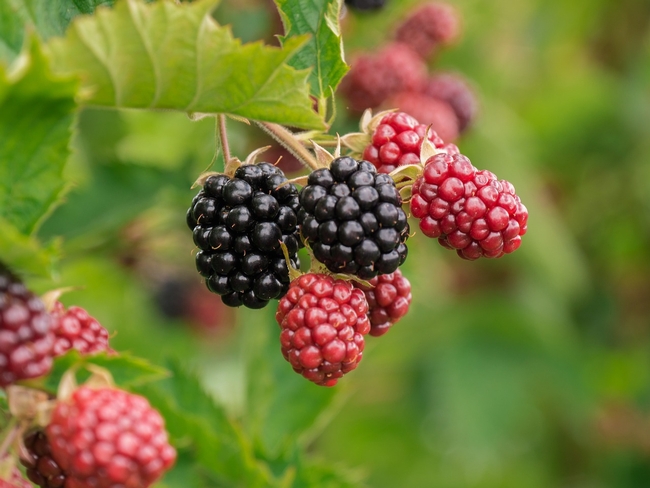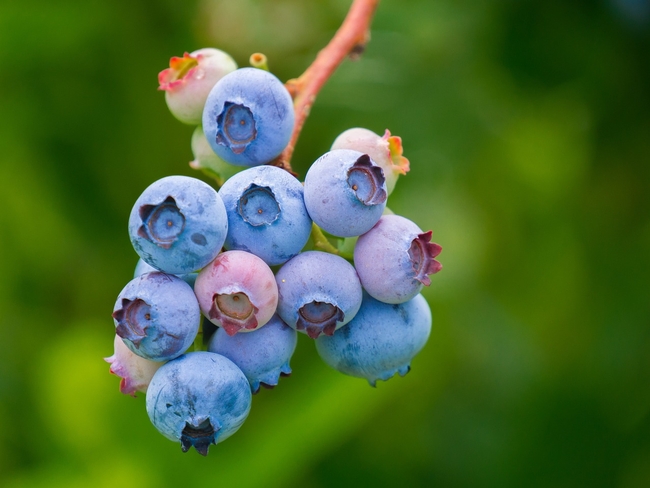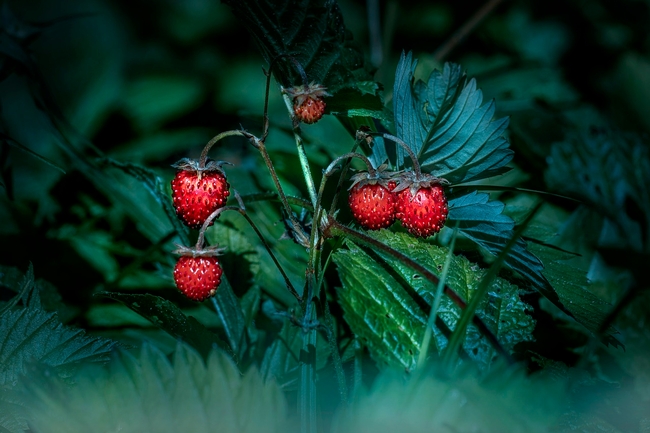What makes a berry a berry? Recently, the host of a new cooking show asked if a cranberry (the key ingredient in a cooking challenge) was really a berry. Her question piqued my curiosity.
Although I like berries, my attention to them is usually limited to their use as a yogurt topping or dessert. After researching the topic, I learned that some fruits we refer to as berries aren't berries, while other fruits we would consider very “un-berry-like” are true berries.
This discrepancy seems to have arisen from the difference between our common use of the word and its botanical definition. Of Germanic origin, the word berry originally meant “grape.” Over time and through repeated usage, berry came to refer to small, soft, juicy, colorful fruit that might be sweet or tart.
Botanical names and common names rarely match. After all, fruits evolved as a way for flowering plants to produce and distribute seeds. They had no clue how scientists would eventually classify them.
As you might expect, a botanical definition is much more precise than a common name. Botanists don't consider taste or appearance, but rather how the plant's flower and adjoining parts develop into a fruit.
In flowering plants, fertilization initiates both seed and fruit development. The ovule (the precursor to the seed), if fertilized by pollen, becomes a seed. The tissue surrounding the seed is the ovary. As the ovary matures into fruit, its wall thickens and differentiates into three distinct layers.
In order to achieve “berrydom,” a fruit must meet three criteria. First, it must have three fleshy and distinct layers. Second, it must have two or more seeds. Finally, a true berry develops from one flower containing a single ovary.
How do these criteria apply to strawberries, raspberries and all the other fruits we consider part of the berry kingdom? Raspberries, blackberries, and strawberries are not from a single ovary, so they don't fit the botanical definition of a berry. Their flowers have more than one ovary. Raspberries and blackberries are made up of multiple drupes, each drupe developing from an ovary and containing a seed. A strawberry is also an aggregate, but in its case the individual parts are called achenes and have seeds on the outside. The achenes are actually the fruit.
Although mulberries resemble blackberries, mulberries are neither berries nor aggregate fruit. They are a multiple fruit. Unlike an aggregate fruit (from one flower with many ovaries), a multiple fruit comes from a cluster of flowers that develop into one fruit. Pineapples and figs are also multiple fruits.
To further complicate matters, berries are divided into subtypes. One subtype is citrus. An orange is a berry of a citrus plant. It is a subtype of berry called hesperidium. Other citrus fruits such as lemons, limes, grapefruits, clementines and kumquats are also examples of hesperidia. Unlike other berries, citrus fruits have distinct segments, juice-filled sacs, and a leathery outer skin.
A second subtype of berry, pepo, includes pumpkins, watermelons, cucumbers, and zucchini. In pepo, the outer layer of the fruit becomes leathery and thick.
Cherries, although juicy, tart, and bright red, can't be berries because they have only one seed. (They are drupes.) The same limitation applies to plums, peaches, and apricots. Apples and pears aren't berries because they don't develop from just the ovary. Instead, they develop from non-reproductive structures near the ovary and are therefore called accessory fruits.
Which fruits, then, are berries? Of the familiar fruits that have “berry” in their names, blueberries, cranberries, huckleberries, and gooseberries are berries in the botanical sense. Bananas, tomatoes, kiwis, and eggplants are also botanically berries.
Now, when I blend a berry smoothie, I know that the only true berry I'm adding is the banana, not the raspberries. Berries or no berries if I enjoy it that's what counts.
Composting Workshop: Join UC Master Gardeners of Napa County for a free workshop on “Worm or Backyard Composting: Choose Your Own Adventure” on Saturday, September 7, from 11 am to 1 pm, at University of California Cooperative Extension, 1710 Soscol Avenue, Napa. Learn the basics of hot and cool composting, worm composting and grass cycling. At the conclusion of the workshop, you may purchase a backyard compost bin for $20 (one per household) or get everything you need to build your own worm composting bin, including the worms. Registration required.
Fall Faire: Join the UC Master Gardeners of Napa County for an entertaining and educational event on Saturday, September 28, from 1 pm to 4 pm, outdoors at University of California Cooperative Extension, 1710 Soscol Avenue, Napa. Enjoy exhibits on composting, monarch butterflies, succulents, water conservation, bees and more. The program includes activities for kids, a scarecrow contest, giveaways, and music. Admission is free.
Help Desk: The Master Gardener Help Desk is available to answer your garden questions on Mondays and Fridays from 10 am until 1 pm at the University of California Cooperative Extension Office, 1710 Soscol Avenue, Suite 4, Napa. Or send your questions to mastergardeners@countyofnapa.org. Include your name, address, phone number and a brief description.
Become a Master Gardener Volunteer: UC Master Gardeners of Napa County is now accepting applications for the Class of 2025. Visit napamg.ucanr.edu to read the informational brochure, then register to attend a mandatory information session for applicants. Application deadline is 5 pm on September 25.


